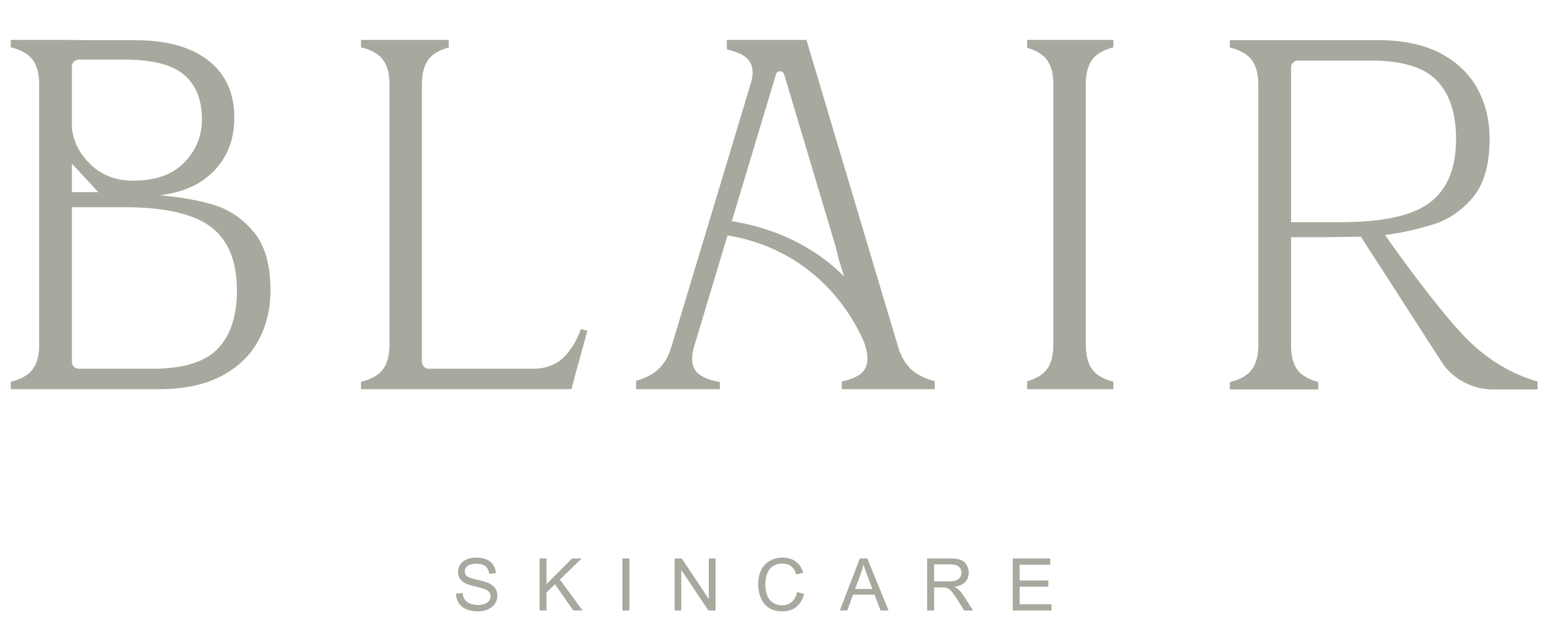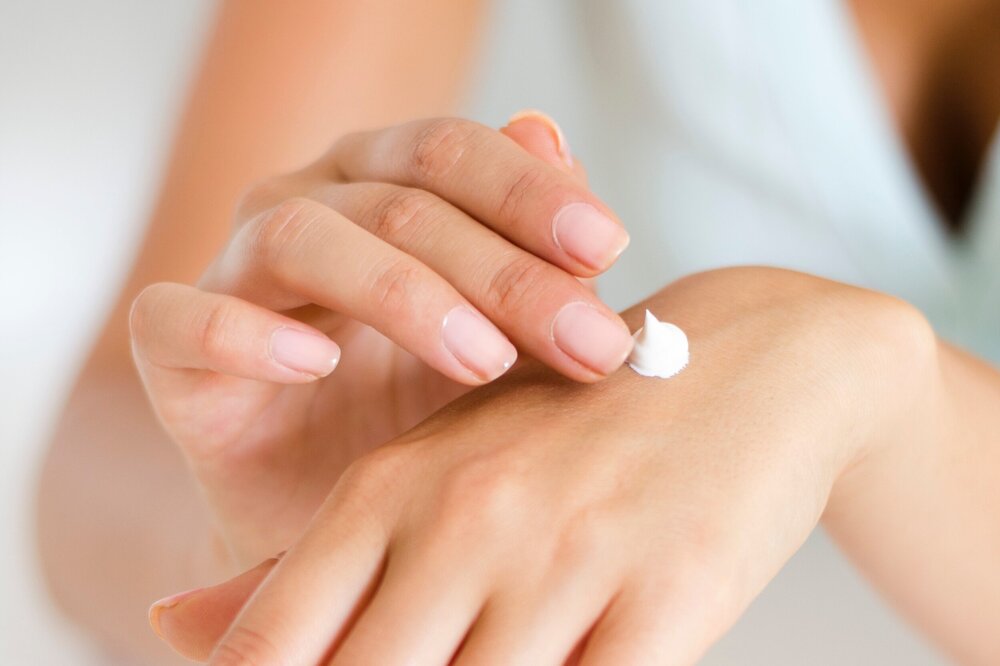
RETINOL, RETIN-A, RETINOIDS – WHAT’S THE DIFFERENCE?
Before we get into specifics, let’s first recap why we need a retinoid in our skincare routine in the first place. Simply put, retinoids stimulate collagen synthesis. The more collagen we have, the younger we look. Now there are other benefits of retinoids such as reducing acne, improving hyperpigmentation, unclogging pores, exfoliating the skin, reducing fine lines and wrinkles (and many many more!), but today I’m just going to focus on the collagen aspect to keep things as simple as possible (because not all of us have hyperpigmentation, but my goodness we ALL need collagen!)
OK – BACK TO THE DIFFERENT TYPES.
The term “retinoid” is an umbrella term – it refers to anything in the vitamin A derivative family. Retinol is a retinoid. Retin-A is a retinoid. Tretinoin is a retinoid. You get the point. Retinoids come in many different forms and strengths, which is the part that can get confusing. To make things simple, I made a chart listing the retinoid hierarchy (see below). The lower the strength, the less collagen stimulation. The higher the strength, the more collagen stimulation. The more collagen stimulation, the younger your skin looks (less fine lines and wrinkles).
SO IT MAKES SENSE FOR EVERYONE TO JUST USE THE HIGHEST STRENGTH RETINOID, RIGHT? WRONG.
Retinoids can be very irritating to the skin if not used properly. The higher the strength, the more skin irritation (redness and peeling), the lower the strength, the less skin irritation. So then it becomes a balancing act – finding the highest strength (and thus more collagen stimulation) that causes the least skin irritation. The best way to start on a retinoid is to start at the bottom and gradually work your way up.

RETINOL
The lowest (and thus least effective) type of retinoid is retinol. This is what you will find “over-the-counter” - if you’re buying products from Sephora, Dermstore, Ulta, or any other store that isn’t a doctor’s office, it will be a retinol. It usually comes in a couple of strengths - commonly 0.5 and 1.0 - but is still less potent than any other retinoid on the market. Surprisingly, many people still get skin irritation from retinol, even though it’s a very low dose. So to summarize - retinol is the lowest dose, the least effective, but still irritating to the skin in many patients. It’s safe to say I don’t put any of my patients on retinol anymore. Keep reading to find out why.
RETINALDEHYDE
One step up in strength from retinol is retinaldehyde. If you are not currently on a retinoid, I suggest you start here, and the reason is a bit “science-y”, but bear with me. Retinoic acid is the ONLY form of vitamin A our skin can actually use. All retinoids MUST be converted to retinoic acid before our skin can use them. Retinol goes through two conversions to become retinoic acid - one conversion from retinol to retinaldehyde, and another conversion from retinaldehyde to retinoic acid. But here's the thing… the conversion from retinol to retinaldehyde can be extremely irritating to the skin. However, if you bypass that conversion altogether - by using retinaldehyde instead of retinol - you can skip that irritating conversion altogether. This means you can use a stronger retinoid (i.e. more collagen) with less irritation. That sounds like a no-brainer, right?

RETINOIC ACID
The strongest type of retinoid is retinoic acid. It is associated with the most collagen stimulation but the highest potential for skin irritation. For this reason, retinoic acid is considered a drug by the FDA and requires a prescription to obtain, with the exception of Differin (the lowest form of retinoic acid) which was approved to sell OTC a few years ago. There are several forms and strengths of retinoic acid including adapalene (Differin), tretinoin (Retin-A), and tazarotene (Tazorac), among several others. There is a vast difference in strength between these forms, so being under a doctor’s supervision is important.
WHERE DO I START?
If you’re unsure of where to start, I highly recommend starting with RET+. This product is a retinaldehyde, meaning it stimulates more collagen then retinol with little to no irritation to the skin. This is a great option for dry skin, sensitive skin, reactive skin, and/or those suffering from rosacea. Not only does it feel amazing, but you will no doubt notice an improvement in your skin tone and texture. Just trust me on this one!
If you have oily skin or if you have already been tolerating a retinoid well, I would recommend bumping up to a retinoic acid such as tretinoin 0.025% a few nights a week and gradually increasing frequency as tolerated. Once you’re able to tolerate it every night with no irritation, I recommend bumping up to the next strength, in this case tretinoin 0.05% a few nights a week. If you are interested in starting on tretinoin or another retinoic acid product, your primary care doctor or dermatologist can prescribe it at your next office visit.
FREQUENTLY ASKED QUESTIONS:
When should I apply my retinoid? Retinoids should be part of your night time routine and are not meant to be used during the day. The sun’s UV rays inactivate retinoids, so using it during the day is a waste of the product as it will be ineffective. As a side note - products that contain retinol AND SPF together make me seriously question the scientist who developed them… that will always baffle me. Since your retinoid is likely your most active product in your routine, it is best if applied first thing at night after washing/toning.
How much product should I use? I always tell my patients to use a pea size amount of your retinoid and explain it as the amount that fits on the tip of your pinky finger. Using more than this will just cause more skin irritation.
Are there any products that can’t be used with retinoids? It is a common misconception that you can’t use retinoids with other products such as AHA/BHAs, vitamin C, hyaluronic acid, etc. Let me set the record straight and say that is simply untrue! Retinoids can be used with all other skincare products - including glycolic acid, salicylic acid, vitamin C, hyaluronic acid, and everything else you may want to use.
Can I use my retinoid on other parts of my body such as my neck? YES! I highly recommend it! Any skincare you apply to your face, I recommend also applying to your neck, chest, and hands. There’s no point in your face looking 30 if your neck looks 60.
Can I use my retinoid around my eyes? Yes - however due to the thin skin surrounding the eye, most retinoids can be too harsh for this area and cause significant irritation. I always recommend using RET+ on the eye area, even if you’re using a stronger retinoid on the rest of your face. RET is more potent than retinol eye creams and usually tolerated much better.
Do retinoids cause your skin to purge? Products that increase the rate of exfoliation are often associated with purging - these types of products include hydroxy-acids (glycolic and salicylic acid) and retinoids. All the junk in your pores is being pushed out all at once instead of slowly over many months. While this may be unfavorable in the short term. once you get past the purging process, your pores will be junk free and your skin will be better than ever! This phase typically lasts anywhere between 2-6 weeks but can last up to 8 weeks in some individuals.
What age should I start using a retinoid? Did you know retinoids are the #1 product for treating acne? Because of this, many teens are put on retinoids at a very young age which means they are also getting the anti-aging benefits of it, too. Anyone 10 years and older can benefit from a retinoid - the younger the better in my opinion!
How do I know when to increase my retinoid strength? If you are able to tolerate your retinoid every night with no dryness or irritation, it is time to bump up in strength.
Do I need to take a break from my retinoid every few months? Absolutely not! You already went through an adjustment period when you acclimated to your retinoid the first time, coming off and restarting would only start that process all over again! There is no reason you should do a “retinoid break”.
How do I know if I’m going “too hard” with my retinoid? If your skin is inflamed (red, hot, tender, irritated, etc), I recommend holding off on using it again until the irritation has subsided. However, if your skin is just dry and flaking and you’re fine to “push through” the peeling process, there is no need to take any nights off between use.
Should I come off of my retinoid in the summer? The most important part of using a retinoid is also using an SPF. Retinoids can make your skin more sensitive to the sun, so wearing your sunscreen is very important. As long as you are wearing a hat and sunscreen, you should have no problem continuing your retinoid during the summer months.
Do retinoids thin the skin? This is another retinoid myth - not only do retinoids NOT thin the skin, they actually do the OPPOSITE! Some think that since retinoids exfoliate the epidermis they must be thinning the skin - but what they aren’t taking into consideration is the fact that retinoids thicken the dermis due to new collagen growth. So to answer the question - no it does not.
Can I use a retinoid if I am pregnant or nursing? Most OBGYNs recommend coming off of your topical retinoid while pregnant or nursing mainly due to litigious reasons and not due to evidence showing it’s harmful. While you're pregnant, I recommend using Bakuchiol as a retinoid-alternative since it has very similar effects as retinoids but is safe for baby!


